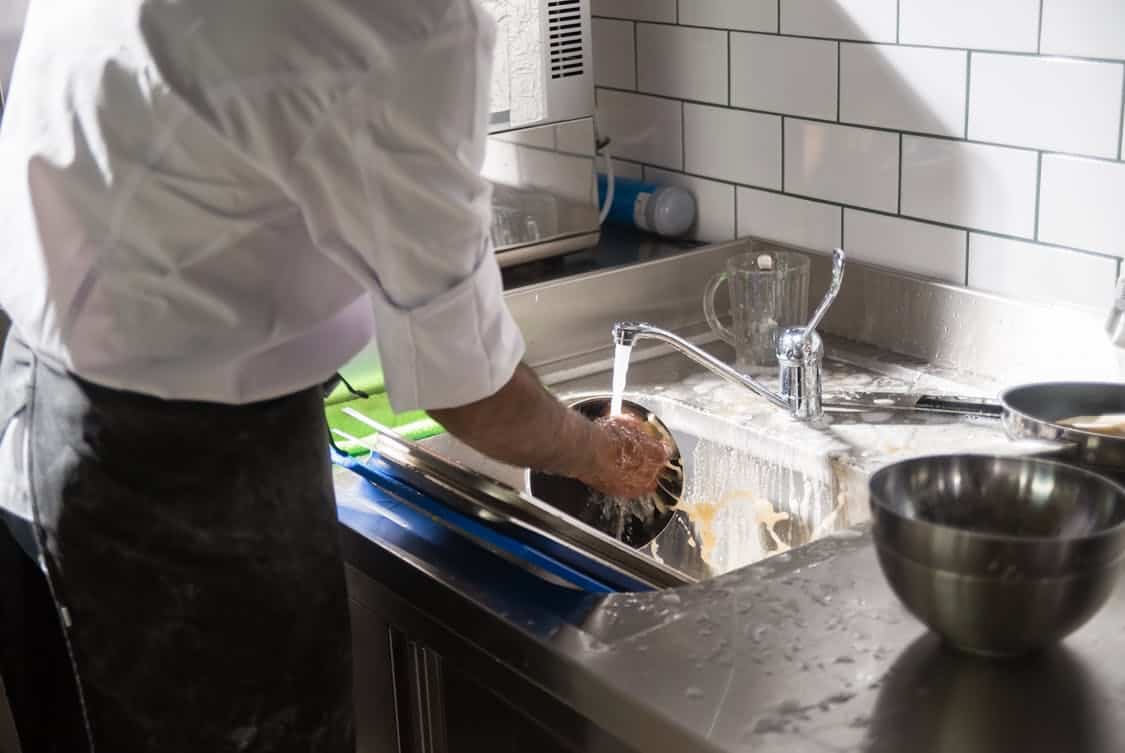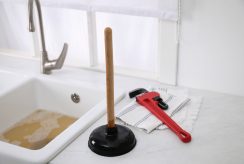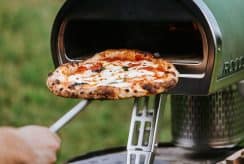When it comes to running a restaurant, efficient plumbing systems are critical for maintaining hygiene and functionality. Commercial kitchens are busy places where the demand for clean water and effective waste disposal is constant.
A well-designed plumbing system can make a significant difference in the daily operations of a restaurant.
The Basics of Commercial Plumbing
Commercial plumbing refers to the specialized plumbing systems designed for the unique needs of businesses, particularly restaurants.
Unlike residential plumbing, which typically handles fewer fixtures and less water, commercial plumbing systems must accommodate higher volumes and a greater variety of equipment.
In restaurants, plumbing includes everything from sinks and dishwashers to grease traps and water heaters. Each component must be carefully planned and installed to ensure that the kitchen runs smoothly and efficiently.
Key Components of Restaurant Plumbing
Understanding the main components of a restaurant’s plumbing system is essential for effective management. Here are some critical parts that every restaurant owner should be aware of:
Water Supply System

A reliable water supply is fundamental for any kitchen. This system delivers hot and cold water to various fixtures, ensuring that everything from cooking to cleaning can be performed seamlessly.
In commercial kitchens, water pressure must be sufficient to handle multiple outlets simultaneously, such as dishwashers, sinks, and ice machines.
Drainage System
Equally important is the drainage system, which is responsible for transporting wastewater away from the kitchen. Proper drainage prevents clogs and ensures that harmful bacteria do not linger in the workspace.
This system must be designed to handle heavy-duty waste, including food particles and grease.
Grease Traps
Grease traps are specialized devices that prevent fats, oils, and grease from entering the municipal sewer system. In a restaurant setting, where frying and cooking generate significant grease, these traps are vital.
They must be installed correctly and maintained regularly to function effectively.
Importance of Proper Installation
Proper installation of plumbing systems in a restaurant kitchen is essential for avoiding future complications. Poorly installed plumbing can lead to leaks, clogs, and even health violations.
It’s beneficial to hire experienced professionals who understand local codes and regulations to ensure compliance and safety.
When plumbing is installed correctly, it not only helps in daily operations but also minimizes the risk of costly repairs down the line. Regular maintenance and inspections are key to identifying potential issues before they escalate.
Choosing the Right Pipes
In restaurant plumbing, the choice of materials is critical. Different types of pipes have varying strengths and weaknesses. Common materials include:
PVC (Polyvinyl Chloride): Lightweight and resistant to corrosion, often used for drainage.
CPVC (Chlorinated Polyvinyl Chloride): Similar to PVC but can handle higher temperatures, used for hot water lines.
Copper: Durable and resistant to corrosion, best for drinking water lines but can be more expensive.
Stainless Steel: Ideal for areas that require sanitary conditions, such as food preparation.
Selecting the right type of pipe for the right application can enhance the overall longevity of the plumbing system.
The Role of Drainage in Kitchen Hygiene
Hygiene is a top priority in any restaurant. An effective drainage system plays a significant role in maintaining cleanliness.
It is critical to ensure that wastewater is swiftly removed, as stagnant water can lead to health hazards.
Regular cleaning of drains and grease traps is necessary to prevent blockages. Establishing a routine maintenance schedule can help in keeping the system running smoothly and avoiding health code violations.
Plumbing Codes and Regulations
Every restaurant must comply with local plumbing codes and regulations. These codes outline the minimum standards for plumbing installations and ensure that systems are safe for use.
Non-compliance can lead to fines and, in severe cases, the closure of the establishment.
It’s advisable for restaurant owners to familiarize themselves with local codes and work closely with licensed plumbers who understand these regulations. This proactive approach can save a lot of headaches in the future.
Common Plumbing Issues in Restaurant Kitchens
Even with the best systems in place, issues can still arise. Recognizing common plumbing problems can help in addressing them quickly:
Clogged Drains
Clogs in the kitchen are often caused by food particles, grease buildup, and foreign objects. Regular maintenance and the use of strainers can help prevent major clogs from occurring.
Leaky Faucets
Leaky faucets can waste significant amounts of water and lead to higher utility bills. A small drip can turn into a larger problem if not addressed promptly. Regular inspections can help catch these issues early.
Water Pressure Problems
Low water pressure can disrupt kitchen operations, making tasks like washing dishes more difficult. This issue may arise from blockages in pipes or issues with the municipal supply.
The Importance of Regular Maintenance
Just like any other system, restaurant plumbing requires regular maintenance to ensure optimal performance. This includes routine inspections, drain cleaning, and checking for leaks.
Building a relationship with a reliable Plumber Bondi ensures that your restaurant’s plumbing system remains in top condition and any issues are addressed promptly. They can perform regular check-ups and address any concerns before they escalate into expensive repairs.
Emergency Plumbing Situations
In the fast-paced environment of a restaurant, plumbing emergencies can happen when least expected. Knowing how to handle these situations can make all the difference. Here are common emergencies and tips to deal with them:
Major Leaks
If you discover a significant leak, it’s essential to act quickly. Shut off the water supply immediately to prevent further damage. Contact a plumber right away to assess the situation.
Overflowing Toilets or Sinks
When a toilet or sink overflows, it can create a chaotic scene. Shut off the water supply to the fixture and try to clear the blockage if safe to do so. If the problem persists, call a plumber for assistance.
Lost Water Supply
A sudden loss of water can halt operations in a restaurant. Check for leaks or issues within your plumbing system. If nothing seems amiss, contact your water utility provider to determine if there are broader issues.
Training Staff on Plumbing Best Practices
Training staff on plumbing best practices can lead to better maintenance and fewer issues. Employees should be educated on how to use kitchen equipment properly and how to dispose of waste materials.
Implementing a clear policy for what can go down the sink and educating staff on the importance of reporting plumbing problems can go a long way toward preventing bigger headaches down the line.





